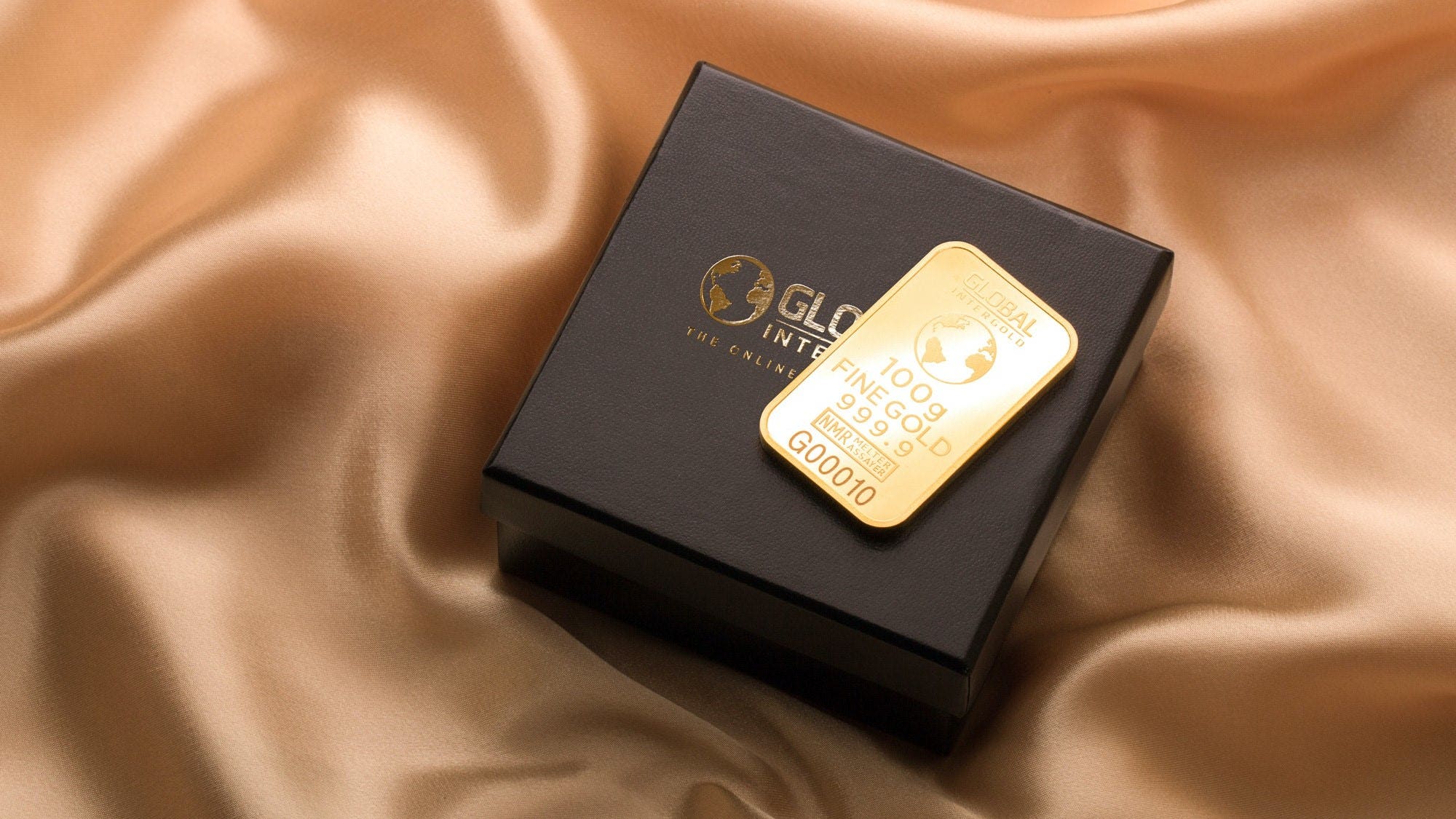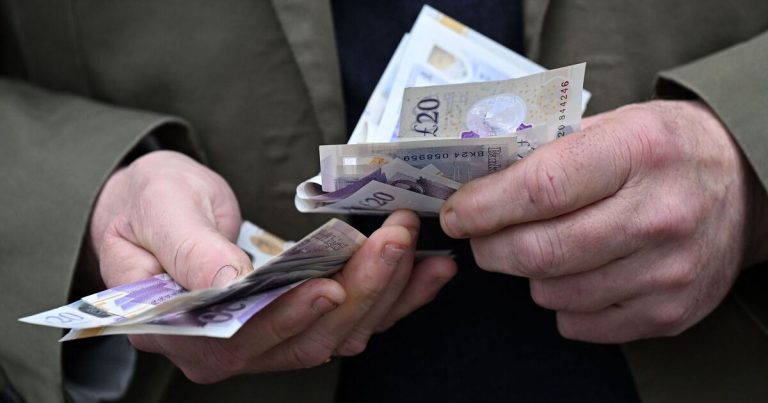
Gold is among the most favorite commodities Indians like to invest in because of two main reasons—the country’s love for the yellow metal and the hedge that it can potentially provide against inflation. Besides retail investors, majority interest for gold arises from central governments worldwide and exchange traded funds (ETFs) houses as well.
There are multiple ways to invest in gold. Here’s a detailed guide on how you can determine the price of gold and make the best of your gold investment.
Featured Partner
Powerful Online Marketplace
Fund, buy and manage your holdings on a refreshingly simple platform
Secure
Assets are stored in highly secure non-bank vaults
Liquidity
Take delivery from the start, or any time later, around the world
Here’s a detailed guide on how you can determine the price of gold and make the best of your gold investment.
Table of Content
Gold Price In Indian Cities
The price of gold (XAU) today, as of 9:34am, is INR 5,278 per gram of 24-carat gold. That’s up 0.08% on yesterday’s close of INR 5,274.
Compared to last week, Gold is up 2.32%. It’s up 2.07% on one month ago.
The 52-week gold price high is INR 5,300, while the 52-week gold price low is INR 4,874.
The price per gram of 22-carat gold is INR 4,838.
Gold prices vary by city. Check out below to see the price of gold where you live.
Compare 22K & 24K Gold Rate In India (Yesterday & 23. October 2023)
24 Carat Gold Rate Today
22 Carat Gold Rate Today
*The gold price data above is provided by Zyla Labs, which sources asset price data from a wide range of sources. This gold price represents an average of spot gold prices on several leading metals exchanges. Prices are updated every business day.
Gold Rate Today: October 23, 2023—XAU’s Price Moves Up
The price of gold (XAU) today, as of 9:34am, is INR 5,278 per gram of 24-carat gold. It’s up 0.08% on yesterday’s close of INR 5,274, up 2.32% on last week and up 2.07% on one month ago.
The 52-week gold price high is INR 5,300, while the 52-week gold price low is INR 4,874.
The price per gram of 22-carat gold is INR 4,838.
Gold ROI
If you purchased a gram of 24-carat gold at today’s price of INR 5,278 and sold it in 10 years at an average annualized return of 10%, you’d earn approximately INR 9,067 in interest, assuming daily compounding.
If you want to start investing in gold digitally, there are a few ways to do so. Digital gold is a method by which you can invest in the yellow metal in small fractions anytime and anywhere with the convenience of digital access to the commodity. Keep in mind you may owe taxes on any gains you realize.
Gold Rate Over Time
The 24-carat gold price has increased by 0.08% from yesterday’s closing price. Overall, the price of gold has moved up this year. Over the past 90 days, it has increased to its current price. Gold’s price today is in line with its average for the first half of the year of INR 5,278 per gram of 24-carat gold.
Gold Rate In India Today: October 23, 2023
Gold Price Comparison For The Last 10-Days
Featured Partner
Powerful Online Marketplace
Fund, buy and manage your holdings on a refreshingly simple platform
Secure
Assets are stored in highly secure non-bank vaults
Liquidity
Take delivery from the start, or any time later, around the world
Monthly Graph of Gold Rate in India (24K Gold)
Monthly Graph of Gold Rate in India (22K Gold)
Factors that Determine Gold Price in India
Typically, the demand and supply for an asset class determines its price. This phenomenon is no different for gold. However, the price of gold is heavily dependent on other key factors including:
Central Bank Gold Reserves
Gold is considered an important reserve for any central bank worldwide given its ability to support the national currency. For instance, all banknotes issued by the Reserve Bank of India (RBI) are backed by gold.
When a country exports gold and continues to have rich gold reserves, such a situation automatically helps in strengthening its currency. Countries with low gold reserves or seen importing more gold may witness their currency getting devalued with the passage of time.
This explains why the Indian government recently hiked import duty on gold from 10.75% to 15% to stifle an increase in gold imports, which was putting pressure on the country’s current account deficit. By making gold purchases expensive, gold imports could be brought down consequently preserving foreign reserves.
In general, when a central bank or government buys more gold, its prices tend to increase. Exports may result in lower gold prices in the home country.
Strength of the U.S. Dollar
The price of gold is inversely proportional to the value of the U.S. dollar. When the U.S. dollar strengthens, the price of gold falls and vice versa. Amid high inflation, the capacity to purchase more goods decreases, thereby denting the value of the U.S. dollar. As the U.S. dollar depreciates, the price of gold picks up.
In India, to determine the price of gold, the U.S. dollar’s conversion to the Indian rupee is considered. When the Indian rupee depreciates against the U.S. dollar, the price of gold is likely to fall.
Demand for Gold
When the demand for gold rises, it pushes its prices higher. The demand for gold can increase via two ways:
- Household and Industrial demand
Household demand for gold is fuelled by the demand for gold jewelry or other physical forms of gold purchases such as bars and coins. India is among the top physical gold buying countries. When the demand dips, supply increases, weakening the price of gold.
- Industrial demand is fuelled by electronic and medical device manufacturers who require gold for productions of their goods. When the demand dips, the price of gold is likely to fall.
Investment demand is mostly fuelled by ETFs houses worldwide who purchase gold to cater to their investing clients’ requirements. Q1 2022 Gold Demand Trends report by Gold.org shows gold ETFs had their strongest quarterly inflows since Q3 2020, fuelled by safe-haven demand. Holdings jumped by 269 trillion, more than reversing the 174 trillion annual net outflow from 2021.
Gold Production Capacity
Gold is a commodity that is available in limited quantities and miners have to ensure the demand is being constantly met. The same report by Gold.org mentioned above also showed mine production hitting an all-time first-quarter high, which dates back to 2000, to 4% and a 15% year-on-year high to 310 tonnes jump in resurgent recycling marking the strongest first quarter for gold recycling activity for six years.
As a general demand-supply rule, when the supply of gold increases, its price is likely to fall if the demand remains unchanged.
Gold Price Discovery
Gold prices are fixed twice a day by five London Bullion Market Association (LMBA) market makers who comprise the London Gold Market Fixing Limited. They set the prices for gold that are globally considered as the international standard for gold pricing. Bids are collected from buyers and sellers and a price is discovered as fixed price for the day.
Two kinds of gold prices are discovered via the LMBA market makers:
- Spot price: This is the market price at which gold is bought and sold on the spot, and involves immediate exchange of payments and delivery of gold.
- Futures price: This is the set market price at which buyers and sellers agree to carry out gold trade at a determined future date.
In India, gold prices are determined by the Indian Bullion Jewellers Association (IBJA). IBJA invites “bid” and “ask” quotes from the top ten gold dealers in India who arrive at a price suggestion by factoring in the international price of gold and multiplying it with the currency exchange value, import duty and other taxes and their margins.
IBJA then determines a mean price for gold on a particular day. This mean price is further corrected by adding any other taxes needed to derive a gold rate for the day.
How to Trade Gold in India
In India, gold is traded on a government-run dedicated stock market exchange called the Multi Commodity Exchange (MCX). A gold trade on the MCX implies trading in future contracts of gold, also called gold futures.
Featured Partner
Powerful Online Marketplace
Fund, buy and manage your holdings on a refreshingly simple platform
Secure
Assets are stored in highly secure non-bank vaults
Liquidity
Take delivery from the start, or any time later, around the world
The way a futures contract works is that an agreement is made to buy or sell gold at a future date for a set price. While the investor has the option of taking the physical possession of gold at the determined future date, it is more common for them to settle the futures contracts in cash.
The MCX permits the investor to trade in gold via four kinds of futures contracts. These include:
- Gold
- Gold Mini
- Gold Guinea
- Gold Petal
To trade in a gold futures contract, you need to have a trading account with a commodity account with the commodity exchange of your choice. Besides the MCX, global commodity exchanges are popular for gold futures trading. Top commodity exchanges for gold trade include:
- London Metal Exchange (LME)
- Intercontinental Exchange (ICE)
- Chicago Mercantile Exchange (CME)
- Tokyo Commodity Exchange (TOCOM)
The price of gold traded on the MCX is determined by the following factors:
- International price of gold
- USD conversion to INR
- Troy ounce to gold conversion (gold prices globally are tracked in troy ounces instead of grams, a gold weight measure used by the MCX)
- Trading activity on MCX (supply-demand of gold)
1 troy ounce is equal to 31.103 grams.
The quoted price of gold on the MCX is 10 gms for 1 unit of gold. Hence to determine the price of gold on the MCX, the calculation formula is:
Price of 1 Unit = International gold price x USD-INR conversion / troy ounce to grams conversion
Ways To Buy Gold In India
Investment in gold can be via multiple ways depending on which market instrument the investor is most interested in. Among popular ways to invest in gold are:
1) Physical Gold
To make a physical gold purchase, investors can choose between:
Gold Jewelry
The best way to buy and sell gold jewelry is via jewelers. Choosing hallmarked jewelry is a sure shot way to ensure you aren’t paying more than the value of the purchase.
Any purchase of gold jewelry attracts cost of making and taxes, namely the Goods and Services Tax or the GST. Making charges to the tune of 5% to 20% and GST of 3% are standard.
When you sell this gold jewelry, you may not be able to retrieve the making charges and the GST paid at the time of purchase. You may need to pay capital gains tax over the proceeds you make from selling your jewelry—short-term capital gains tax for jewelry below the period of 36 months and long-term capital gains tax of flat 20% if held above 36 months.
Gold coins and bars
The best way to buy and sell gold coins and bars is via jewelers, bullion traders or government-backed institutions such as the MMTC. You must check the hallmark on the gold coins and bars before buying.
Gold coins and bars attract making charges to the tune of 2% to 10%, and a GST of 3% similar to what one pays for the purchase of gold jewelry. This GST value is not retrievable at the time of sale.
2) Digital Gold
Sovereign Gold Bonds (SGBs)
Sovereign gold bonds are government-backed securities available in denominations of grams. The minimum investment in a sovereign gold bond can be 1 gram and the maximum investment limit can go up to 4 kilograms per year for an individual and 20 kilograms for trusts.
SGBs are issued for a lock-in period of eight years and their early redemption is permitted after the first five years of investment. Investors can’t redeem SGBs on any given day; instead, they can redeem their SGBs on interest payment dates announced by the RBI.
Sovereign gold bonds are considered better investments than physical gold as purchase of these bonds attracts lower costs and better annual returns. Investors are paid an assured interest rate of 2.5% semi-annually. Upon redemption of SGBs, interest paid to the investor is taxable while the capital gains upon maturity of these are tax-exempt for individual investors. This tax exemption is not applicable for trusts, however. Click the following link to read our guide on how to buy sovereign gold bond.
Gold ETFs
Gold ETFs are units of gold held in a dematerialized form, and are available to trade in similar to how mutual fund units are available on the stock market exchanges.
Investing in gold ETFs is simple: you need to choose your preferred gold ETF listed by your brokerage company or fund house on the stock exchanges and begin trading via your demat account.
Gold ETFs do not have lock-ins and are fairly easy to enter and exit. Whenever a gold ETF trade is conducted, a brokerage charge is applicable. The fund house also charges processing fees.
The taxation on gold ETFs is similar to the taxation of any market-linked asset linked on the stock exchanges. Investors pay capital gains tax on making a profit and do not need to pay any GST like in the case of physical gold.
Digital Gold Wallets
With digital gold wallets, users can download the mobile applications of the gold wallet provider and invest as low as INR 1 in the gold wallet through various online fund transfer facilities. This is similar to buying INR 1 gold.
These companies store this gold in the lockers of MMTC-PAMP.
The purity of gold is predefined and the gold can be sold and bought any time and from anywhere through these mobile applications.
In the recent past, many companies have introduced gold wallets. These companies include the likes of PhonePe, GPay, Paytm, among others, who provide their users this facility.
Gold Import Duty in India
Import duty is the tax the government imposes on the import of goods into the country. This import duty has to be borne by the consumer who has imported the goods in question, and the purpose of levying import duty is to check the movement of goods and also protect domestic industries besides earning state revenue.
Import duty falls under the category of indirect taxes in India and is commonly referred to as customs duty as well. For the import of gold, the Indian government has set a limit of 1 kg of physical gold and any import above 1 kg is taxed heavily.
Here’s how the gold import duty in India looks like:
- Import on gold jewelry, bars and coins is currently set at 12.5%. When GST is added over this duty, the final tax on the physical gold asset turns out to be 12.5% + 3% flat GST + 5% GST on making charges.
- Import on gold jewelry, bars and coins above 1 kg is set at 36.05%. Upon adding GST, the final tax on the physical gold asset turns out to be 36.05% + 3% flat GST + 5% GST on making charges.
Bottom Line
Investing in gold must be done under supervision and with the help of financial experts or portfolio managers. While gold investing has its sheen, creating an all-gold portfolio isn’t considered the wisest choice. As a thumb rule, gold should be used to add a more stable asset class to your financial portfolio, and help you in diversifying your investments to some extent.
Frequently Asked Questions (FAQs)
What is the difference between 24 karat and 22 karat gold?
Karat is a measure used to determine the purity of gold.
24 karat gold means the gold is 99% pure whereas 22 karat gold means the gold is 91.67% pure and remaining 8.33% metal is an alloy mixture that could comprise of copper, silver or nickel added to improve the gold’s durability.







